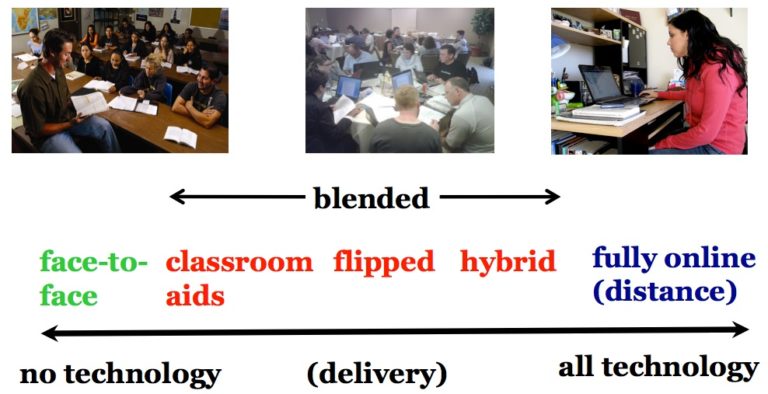Week 1
What does the constructivist perspective mean to me and my thinking about teaching and learning in an online context? [include references]
I understand constructivism to mean that knowledge and identity are continually reconstructed through social interaction. I particularly like the way that Neil Mercer frames it as ‘interthinking’, or the process through which learners pool their intellectual resources in order to think together and simultaneously develop knowledge (2000).
There are a number of key characteristics of constructivism that are of particular significance to my own understanding of teaching and learning, especially in an online context. Often online learning is asynchronous, which means that opportunities for social interaction are limited. McLeod speaks about how technology (via electronic tutors) can be “programmed” with enough knowledge to act as Vygotsky’s ‘More Knowledgeable Other’(2018); however, I question whether the interactive opportunities presented by a pre-programmed e-tutor can genuinely emulate the discourse provided by another person. Especially if we consider one significant component of learning to be gaining access to membership in communities or cultures by “being active participants in the practices of social communities and constructing identities in relation to these communities” (Wenger in Illeris, 2009, p. 210).
Second, the role of learners in a constructivist learning environment should be far more agentive than it might be in an interpretivist learning environment. Again, I wonder how this view impacts the design and delivery of digital learning materials. In particular, in my own context, some of our faculty rely on the recorded lecture model when developing digital learning resources. However, I feel that in constructivist environments, the resource should be co-constructed by students. I’m interested in looking at more dynamic discussion tools, such as VoiceThread (https://voicethread.com/) or Annoto (https://www.youtube.com/watch?v=w9qIgsD2Ox4).
REFERENCES
Mcleod, S. (2018). “Lev Vygotsky”. Retrieved from https://www.simplypsychology.org/vygotsky.html
Mercer, N. (2000) Words & Minds: How we use language to think together. London: Routledge. Print.
Wenger, Etienne. “A Social Theory of Learning” in Illeris, Knud (ed.) (2009). _Contemporary Theories of Learning: Learning Theorists — In Their Own Words_. Routledge.
What is online learning (terminology is complex—explain what you mean and include references so that it is clear where you got quotes/data that you might refer to)?
Online learning for me is any learning that is supported by digital materials, and encompasses everything from technology-enhanced learning to fully distance education.
I agree with Tony Bate’s view of online learning as a continuum, as depicted in the image below. (Bates, 2016).

I agree with Bates that it’s important to remember that “online learning is primarily a mode of delivery, a way of delivering education to learners, NOT a particular method of teaching” (Bates, 2016). Often, people think that digital curriculum is instantaneously innovative; however, online learning can reflect multiple epistemological views, including interpretivism (or transmission of learning) and constructivism. And, as I’m constantly reminding my faculty, using a new tool to deliver curriculum in an old way does not automatically lead to innovation.
REFERENCES:
Bates, T. (2016, July 15). Retrieved from https://www.tonybates.ca/2016/07/15/online-learning-for-beginners-1-what-is-online-learning/
What online learning methods/contexts (blended, flipped, fully online, discussions) are important to me and my future career, and what resources will keep me informed about projected trends in these areas. Be sure to describe the context and definitions important to you.
I’m interested in all online learning modalities. Currently, I support the development of digital resources for a traditional curricular program. Our online materials are either supplementary or are used for flipped classrooms. Previously, I supported the development of a fully online blended (synchronous and asynchronous) Academic English program. My future career goal is to work in a learning development role supporting the development of curriculum across all faculties in the University. I’m current trying to grow my PLN, but I follow a lot of resources such as EdSurge (https://www.edsurge.com/), eCampusOntario (https://www.ecampusontario.ca), and a number of Canadian/Ontario universities’ dedicated Centre for Teaching and Learning groups. I’ve also just joined the Ed Cog Journal Club at McMaster (https://edcog.ca/journal-club.html).
What three questions do I hope to address throughout this course?
- How can interactivity in asynchronous learning materials be designed to provide an optimal learning experience?
- What kind of discourse does structured/facilitated online discussions result in and how does that impact learning?
- How can online learning support a balance between both individualized/personal learning and social learning?